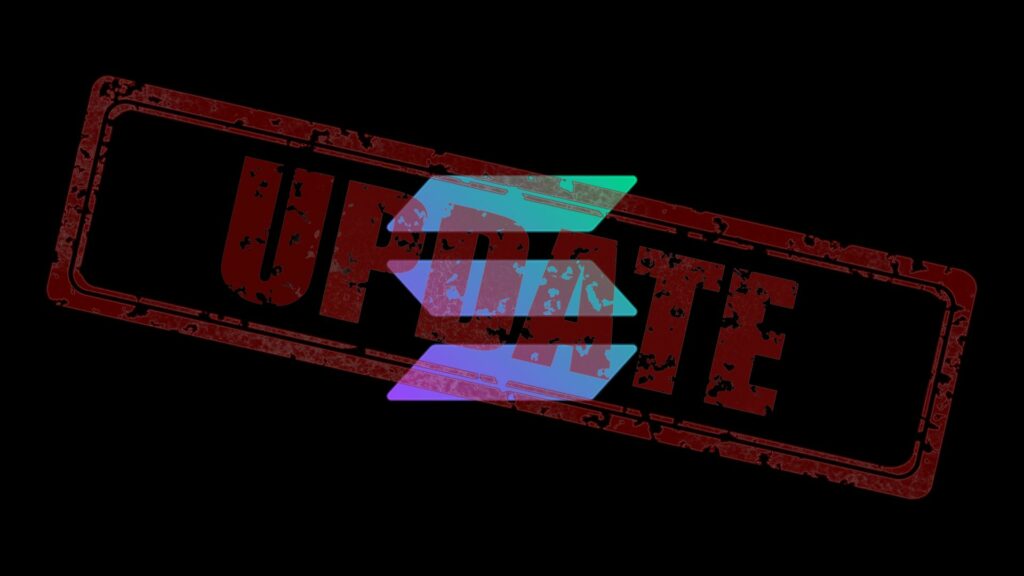Solana is addressing some key challenges in blockchain technology, improving scalability and strengthening security.
A recent proposal introduces a system to make the network more efficient for users, while updates in quantum-resistant technology highlight its approach to long-term security.
Solana’s steady trading activity on decentralized exchanges (DEXs) alongside these technical improvements, reflects its continued relevance. This article examines these updates and their potential impact on Solana.
A New Proposal to Improve Efficiency
One of the challenges for blockchains like Solana is managing the growing number of user accounts efficiently.
Currently, the network recalculates the state of all user accounts regularly, which becomes increasingly demanding as the network expands. This process, often referred to as the “state growth problem,” creates delays and limits scalability.
To address this, Solana developers have proposed a new approach using a system called “lattice-based” hashing.
Source: Github
Instead of recalculating the entire network state, this method updates only the accounts that have changed. This reduces the computational workload significantly while maintaining security.
Anatoly Yakovenko, co-founder of Solana Labs, has previously discussed the issue, noting that new accounts require proof of their uniqueness, which adds to the network’s workload. The proposed system simplifies this process, allowing new accounts to be verified without recalculating everything.
Initial tests with validator clients like Agave and Firedancer show promising results, demonstrating the system’s ability to work effectively in real-world scenarios. If adopted, this proposal could help Solana scale to support billions of accounts without slowing down the network.
The upgrade will go through Solana’s improvement process, which includes validator voting. Developers suggest rolling it out gradually to ensure a smooth transition, allowing nodes to adapt to the changes before the system is fully implemented.
Strengthening Security and Supporting Usage
In addition to improving scalability, Solana is addressing potential future security risks through its Winternitz Vault, a quantum-resistant system designed to protect user funds.
This feature is not a mandatory network-wide change but an optional security upgrade for those who want additional protection.
Quantum computers, although still in development, could one day pose a threat to current cryptographic standards. The Winternitz Vault reduces this risk by generating new cryptographic keys for every transaction, making it harder for attackers to exploit vulnerabilities.
By introducing this optional feature, Solana is preparing for potential future risks while maintaining its current security standards.
While quantum computing may not yet pose an immediate threat, this addition demonstrates a forward-looking approach to safeguarding user funds.
Source: DeFiLlama
Meanwhile, Solana continues to see high levels of activity in decentralized finance. Over the past 24 hours, Solana’s decentralized exchanges recorded nearly $3.8 billion in trading volume, outpacing Ethereum and its layer-2 scaling solution, Base.
This trading activity highlights Solana’s role in the blockchain ecosystem and its ability to attract users.
Raydium, one of Solana’s leading decentralized exchanges, has been a significant contributor to this activity. Its trading volume grew significantly in 2024, driven by the interest in token trading and memecoins.
Memecoins alone have accounted for a significant share of Raydium’s trading volume, reflecting its ability to adapt to market trends and user demand.
While fluctuations in trading volumes are common, the consistent activity on Solana-based platforms suggests that the network remains reliable for users and developers.
This steady usage indicates a healthy level of engagement with the network, even as it continues to address its challenges.
Conclusion
Solana is making practical efforts to address scalability and security, two critical areas for any blockchain network.
The proposed lattice-based hashing system could significantly improve efficiency, allowing the network to handle a growing number of users. At the same time, the introduction of quantum-resistant technology highlights Solana’s focus on preparing for future risks.
With consistent activity on its decentralized exchanges and ongoing development efforts, Solana remains a key player in the blockchain space. These updates reflect a network that is working to meet the needs of its users while planning for the challenges ahead.

